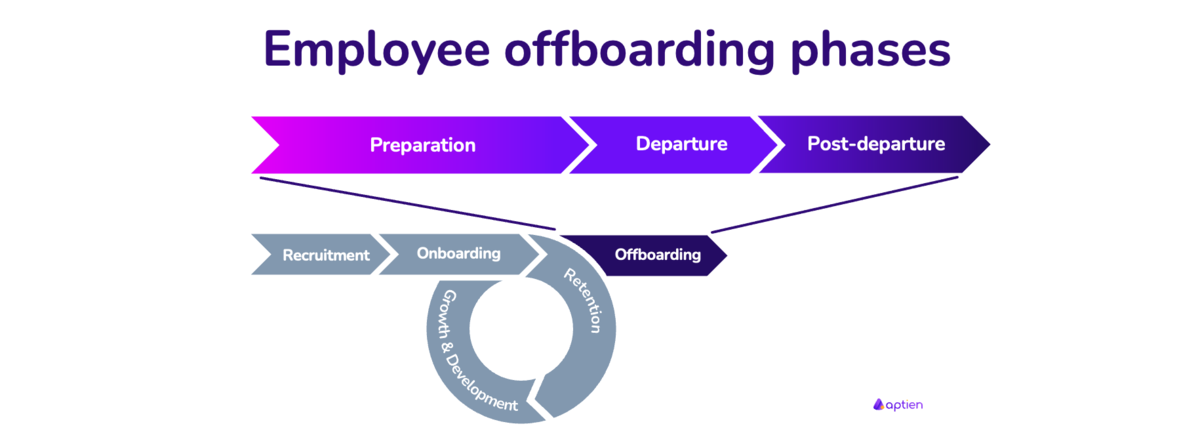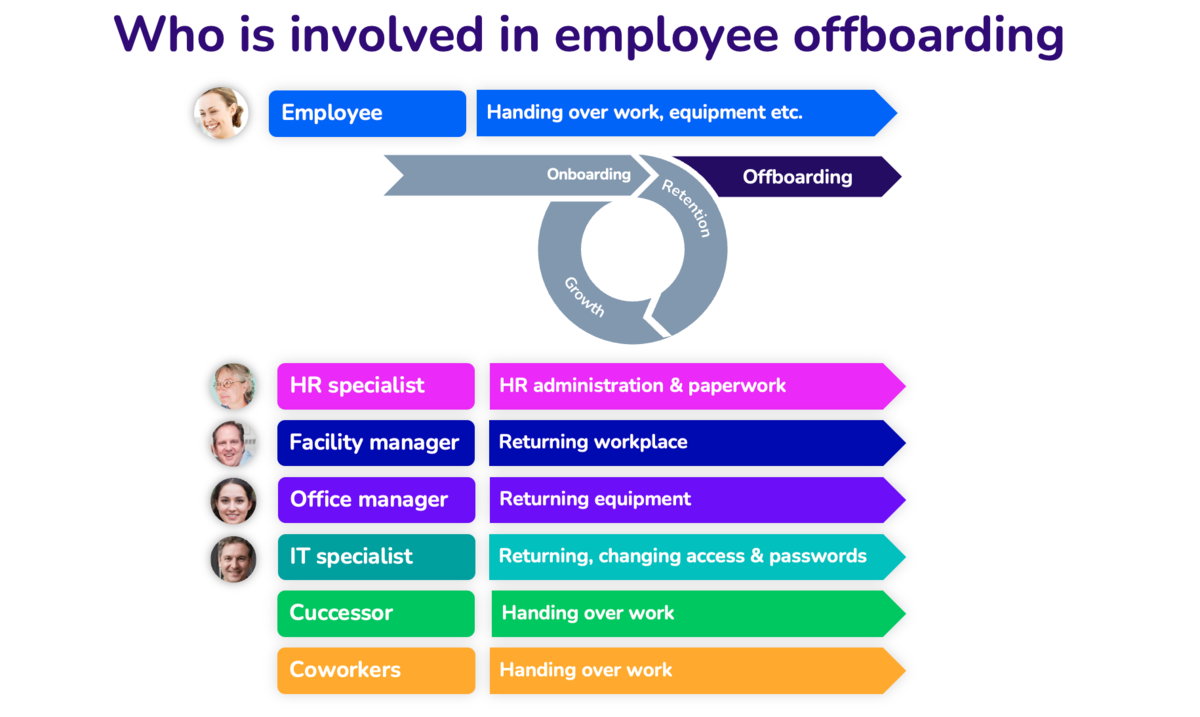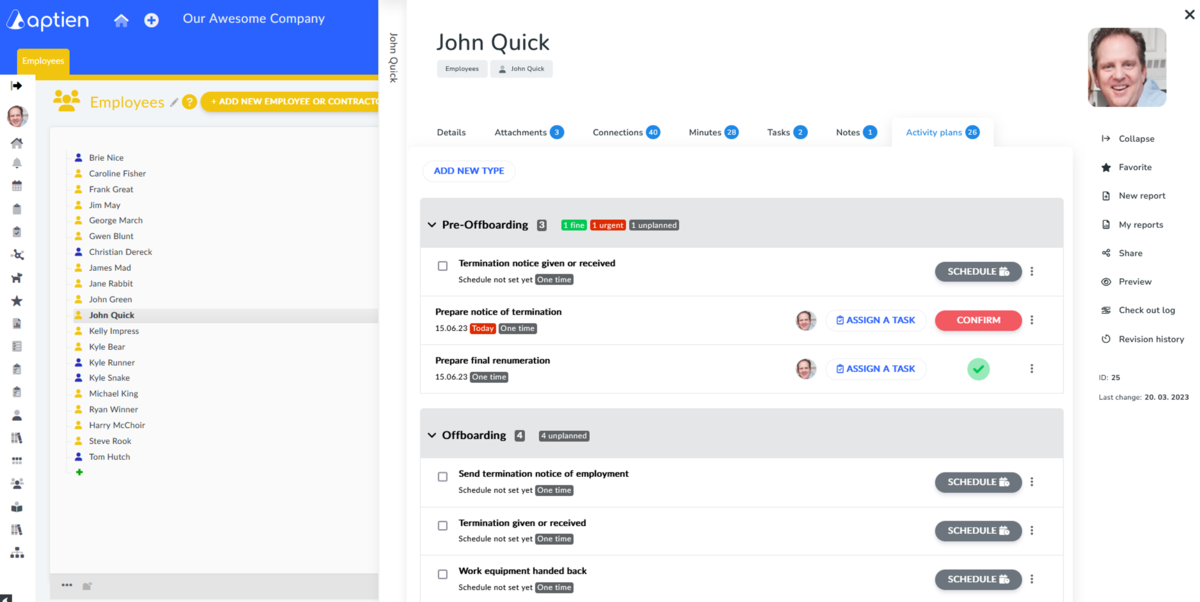What employee offboarding means in one simple sentence
- Employee offboarding is the process of handling everything that needs to be done when an employee leaves a company—like returning equipment, removing access, and completing exit paperwork.
What Employee Departure Means for Growing Small Businesses
Managing offboarding in Excel just doesn’t cut it as your team grows. For small and mid-sized businesses, offboarding is more than just paperwork—it’s crucial for:
- protecting company data and systems by quickly removing access
- avoiding loss of laptops, phones, or keys through proper asset tracking
- saving time and reducing HR headaches with clear, repeatable steps
- making sure you stay compliant with legal, IT, or audit requirements
- and keeping your company’s reputation strong even when employees leave
Without a solid offboarding process, small teams risk security breaches, lost equipment, compliance issues, and unnecessary stress. It covers all the necessary steps to ensure a smooth transition for both the employee leaving and the business.
Employee Offboarding typically involves:
- Conducting an exit interview to collect feedback.
- Collecting company property, like ID badges, laptops, and access cards.
- Disabling access to company systems and data to protect security.
- Handling final payments, including last paycheck, unused vacation, and benefits.
- Providing necessary paperwork, such as reference or experience letters.
- Completing and transferring work responsibilities to team members or replacements.
- Returning work equipment, tools, and other company items.
- Changing passwords, disabling keys, and revoking email and system access.
- Resolving leave balances and severance agreements.
- Issuing official documents like exit letters and income statements.
Exit interview
- Conducting a final discussion to gather feedback and insights.
Work and Knowledge Transfer
- Knowledge Transfer: This can be incremental or one-off. Remember, some knowledge cannot be transferred in units of hours or days.
- Work Transfer: Involves transferring all the employee's work, agendas, processes, and tasks.
- Completion and Handover: Ensure the assumption of duties, responsibilities, and authority.
- Successor Training: Provide necessary training for successors.
Access and Permissions Revocation
- Access and Permissions Revocation: Revoke all access and permissions from the employee, including apps, software, SaaS, cloud services, VPNs, and shared storage.
- Safety Perspective: Place special emphasis on employees with access to sensitive information.
- Physical Premises: Ensure the return of all access items such as keys, access cards, PINs, etc.
- Company Systems: Remove access to company systems, applications, software, cloud services, VPNs, and shared storage.
- Password Changes: Change passwords if necessary.
Returning Work Equipment
- Hand over work equipment
- The company must keep a record of all equipment used by the employee, such as telephones, computers, tools, instruments, and other items
Completion of Paperwork and Legal Obligations
- Paperwork and Legal Obligations: Complete all necessary paperwork and comply with legal obligations, including:
- Termination of employment contract and notice of termination.
- All documents required by local regulations.
Why is Employee Offboarding Important?
Proper employee offboarding is essential to keep your business running smoothly. It helps protect your company’s data and security, and it safeguards your reputation. Offboarding is more than just a checklist at the HR desk—it’s a thorough process that involves managers and teamwork. Clear communication during offboarding helps prevent misunderstandings and rumors.
How Aptien HR Supports Employee Offboarding
Overview of Equipment and Responsibilities:
- The employee profile provides a clear overview of all equipment, tasks, and responsibilities that the departing employee needs to hand over.
Task Planning and Coordination:
- Aptien makes it easy to create a tailored checklist and timeline for all steps involved when an employee leaves.
- This helps coordinate the tasks and efforts of all team members and departments involved in the offboarding process.
- It’s important for the company to have a complete list of all actions required during an employee’s departure.
- With Aptien, you can easily build your own offboarding plan to manage the employee’s exit.


